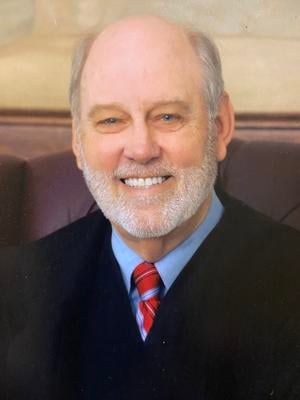
To subscribe, click here. To submit a letter to the editor, click here. To pitch a ‘My Turn’ guest column, email jdalessio@news-gazette.
com . Want to purchase today’s print edition? Here’s a map of single-copy locations. Sign up for our daily newsletter here When I was a little tyke in the early ’50s, I thought Halloween was all about two things: candy, especially paraffin candy, and big brown grocery bags — one to cut eye holes in to wear over my head, and another one to to hold all the treats.
Popular paraffin candy choices included: wax-fangs, being a set of teeth with fangs in the corners, affixed to bright red lips, not unlike Count Dracula’s after a blood draw; ginormous red waxy lips (modeled on Marilyn Monroe’s kisser after one too many collagen injections); and miniature, opaque, paraffin bottles full of sugary colored syrup. The sugar rush from chomping down on those little paraffin bottles of sweet syrup and having the juice splatter all over my mouth cavity remains a personal gastronomic highlight of my life. Next to chili-mac.
As for my paper-bag-over-the-head minimalist costume, that was about all poor people could afford. You could tell a lot about the wealth of the family by the sophistication of costumes for their kids. For just a little bit of money, you could, say, score some cardboard boxes from local stores, and, with a little bit of paint, glue and newsprint, presto , your child could be, say, a Maytag washing machine or a pack of Lucky Strike cigarettes.
The next level up the wealth ladder was using actual household items, like bed sheets, old clothes, brooms, radiator hoses, chainsaws, etc., for clever costumes. People in the early ’50s who could waste these valuable household items on a one-time costume for their child were close to being a Rockefeller.
People who could afford to buy for their child a commercially made mask or full costume from a store were the Rockefellers. Today, I understand Halloween is a more convoluted, controversial tale of murky-mystery and mischief-making than simply grocery sacks and paraffin candy. Halloween traces back about 1,000 years before the birth of Christ and is controversial as being a “pagan festival.
” The Celts of Ireland celebrated the end of summer and start of winter — a period of the “small sun that signified darkness, death and impending chaos.” Today, we continue the celebration of “darkness, death and impending chaos,” but a week later, known as Election Day. The Celts called it “Samhain,” a pagan festival marked by great bonfires and feasts.
Celtlandians thought the great fires helped the dead find their way to the underworld (largely understood today as the Dan Ryan Expressway). During the celebration, Druid priests built the mother of all fires — the “Tlachtge” or “Tlachtge Meath” — into which were tossed sacrifices of food and animals, sometimes even bad people (usually against their will and without due process of law). Besides bonfires, another practice was for the poor to go door to door, disguised in “terrorizing costumes” to beg for charity.
This quaint practice has evolved today into a stranger on a dark street with a gun. Christianity, in the form of the Holy Roman Empire, eventually came to medieval Ireland. Catholic priests tried hard to stop the ancient pagan rituals as being contrary to Christian values and principles.
But the pagan rituals proved too popular, especially the Tlachtge Meath wienie roasts. In the 8th century, Pope Gregory I decided to “Christianize” the problematic rituals by consecrating pagan worship sites and declaring them Christian worship.” Later, seeking to further dilute the power of pagan beliefs, Pope Gregory I moved All Saints Day from May 13 to Nov.
1 to coincide with Samhain. All Saints Day became know as All Hallows. Since Samhain fell on the night before, it became known as All Hallows’ Even’ or Hallowe’en, which, when the letters are rearranged, spell Trick-or-Treat in German.
The Reformation of the 16th century birthed Protestantism, which birthed centuries of bloody conflict between Protestants and Catholics, which birthed a Halloween hot potato, especially in Merry Old England. Consider this twisted widget: Henry VIII, a former Catholic turned Protestant, banned Halloween. Then Mary I, a Catholic, put it back on the calendar.
Then Elizabeth I, a Protestant, banned Halloween again. Then came James I, born to a Catholic but who served England as a Protestant and ..
. are you keeping track? Quiz tomorrow. James I didn’t like all Protestants, especially the Puritans.
The Puritans knew they were not wanted so they set sail for the New World, America, in 1620, in the Samhain Maria. The Puritans disliked Halloween and all other human rituals so much so that in 1659 the Massachusetts Bay Colony passed a law called the “Penalty for Keeping Christmas,” which made Christmas celebrations illegal. (The Puritans made the pagans look good by comparison as almost no one came to their BYOB parties.
) Then around 1850, 1 million or so Irish arrived in America after the Irish potato famine. These fine folks brought along their ancient pagan traditions of “guising, mischief-making and begging for food door to door” and Halloween soon reasserted itself as a “night of unlicensed rowdiness.” Today, bizarrely, you need a governmental license to do unlicensed rowdiness.
Also today, sadly, Halloween has largely lost its ability to scare, becoming sanitized, commercialized and kid-friendly. But some argue it’s been adequately replaced by election season and its over-the-top, scare-you-to-death political speechifying and ads so nauseatingly shrill, scary and depressing that it makes you want to voluntarily jump into that Tlachtge Meath bonfire. The paraffin candy industry still survives but is braced today for litigation over its humongous red wax lips.
Because they objectify women and surely trigger anxiety in, and discrimination against, someone, somewhere, somehow, there is a risk the current distributor, Wack-O-Wax, may retire and melt the beauties. On the positive side, paper grocery bags are making a comeback, as plastic bags not only create pollution but are hard to breathe in when kids pull them over their heads. Unraveling which is false and which is true is up to you, in this — my feeble attempt at guising and mischief-making — mostly true history of Halloween.
.













